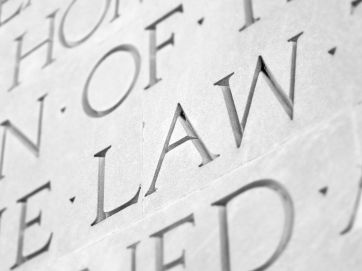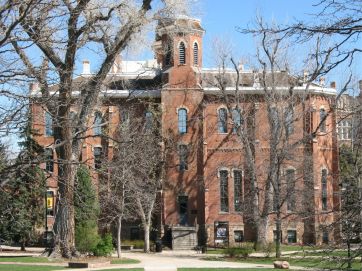CounterCurrent: Week of 04/22/2024
Academic reformers have often looked to “institutional neutrality” as a means to protect the mission of an institution and combat the politicization of colleges and universities. While “institutional neutrality” was largely forgotten, many institutions have come to recently embrace the principle wholeheartedly.
That is why probing into the meaning and history of this term is paramount in the wake of rising faculty cancellations, raging anti-Semitism, and hatred of America and the West. For the simple reason that those intent on cultivating such anti-American, anti-Israeli, and anti-Western sentiments use “institutional neutrality” as a scapegoat to do and say nothing as higher education goes up in flames.
So, from where does “institutional neutrality” hail? Why has it become a vogue in higher education? These questions, and more, are the topic of the National Association of Scholars president Peter Wood’s latest report. His deep dive into the history and current usage of “institutional neutrality” within the higher education sphere merits a close read by all. Though “institutional neutrality” has had its use as a shield for defending institutions and administrators from falling victim to hot button political issues, it has been abused and relied upon as an excuse for the absence of reason and thought. Ultimately, Wood notes, it should be replaced.
Wood points to four reasons why the principle of “institutional neutrality” does no real good in higher education. “Institutional neutrality,”
- empowers the mob;
- excuses the college president;
- undermines rightful authority;
- confuses the public.
The document which gave us the modern and most cited version of “institutional neutrality” is known as the Kalvin report, written in 1967 by the University of Chicago to address how a university should deal with political controversies considering its educational mission and purpose. However the history of “institutional neutrality” reaches back past 1915, even if it was a mere concept. Though the document contains much regarding the mission of the university, Wood writes that the Kalven report remains famous for a few specific statements. Wood remarks that the Kalven report’s committee “observes that the university can’t take collective action on ‘the issues of the day’ without contradicting its basic purpose.” From the Kalven report itself:
There is no mechanism by which it can reach a collective position without inhibiting that full freedom of dissent on which it thrives … The neutrality of the university as an institution arises then not from a lack of courage nor out of indifference and insensitivity.
In theory, the principle of institutional neutrality should act as a shield against extreme politicization. However, its usage, especially in the wake of the October 7 attack by Hamas on Israel and the subsequent anti-Israel riots and protests on American college and university campuses, has become a handy way for administrators to ignore glaring anti-Semitism and far-left politicization. The inaction—under the guise of institutional neutrality—of Harvard’s Claudine Gay and Penn’s Elizabeth McGill in allowing for calls of genocide against Jewish students resulted in their ousting as college presidents.
In the moment, education reformers celebrated the victory of deposing these inadequate college presidents. It appeared that Americans were drawing a line in the sand after “institutional neutrality” was brandished to excuse atrocity. But the issue is far from resolved.
Currently, Columbia, Yale, and New York University are overwhelmed with students protesting the Israel-Hamas war—calling for the violent end of Israel. At this point, over one hundred students have been arrested, areas have been closed down around these universities, and Jewish students fear for their safety amid anti-Semitic harassment. So far, the solution has been to make classes hybrid. Administrators at some of these besieged campuses have, to their credit, suspended arrested students—though it appears some have been reinstated. A lack of clear resolve and denoucement on behalf of administrators has given breathing room to the Jew-haters, encouraging agitators from afar (and the faculty) to join the chorus.
Whether or not colleges and universities will step up to the plate to deal with the political issues they have allowed on their campuses remains to be seen. But one point remains, neither administrators, leadership, nor education reformers can hide behind “institutional neutrality” as a means to quell the hate, push anti-Semitism out of the Overton window, or right the course of academia.
Education reformers found it easy to take up the call for “institutional neutrality” because they were in so weak a position vis-à-vis the ever more radical education establishment. ‘Institutional neutrality,’ one aspect of procedural liberalism, seemed a useful weapon for the weak—and an attractive ideal in itself. But the ideal has proved delusional, and as a weapon it is as easily used against reform as for it. We must call for universities to espouse substantive ideals of truth, liberty, and citizenship, even though they cut directly against the ideological commitments of many of higher education’s administrators and faculty members. This is a challenging task. But Hamas’ massacre of Israelis has stripped us of many illusions—and, unexpectedly, one of those illusions turns out to be that there is a shortcut to reforming our universities by way of ‘institutional neutrality.’
The way for colleges and universities to “fight once more on the side of the angels,” is for reformers to first champion courageously the virtues we want to see restored in higher education, concludes Wood. Leading by example with truth and courage is the remedy to controversy, not “institutional neutrality.”
Until next week.
CounterCurrent is the National Association of Scholars’ weekly newsletter, written by the NAS Staff. To subscribe, update your email preferences here.
Photo by Morphart on Adobe Stock













